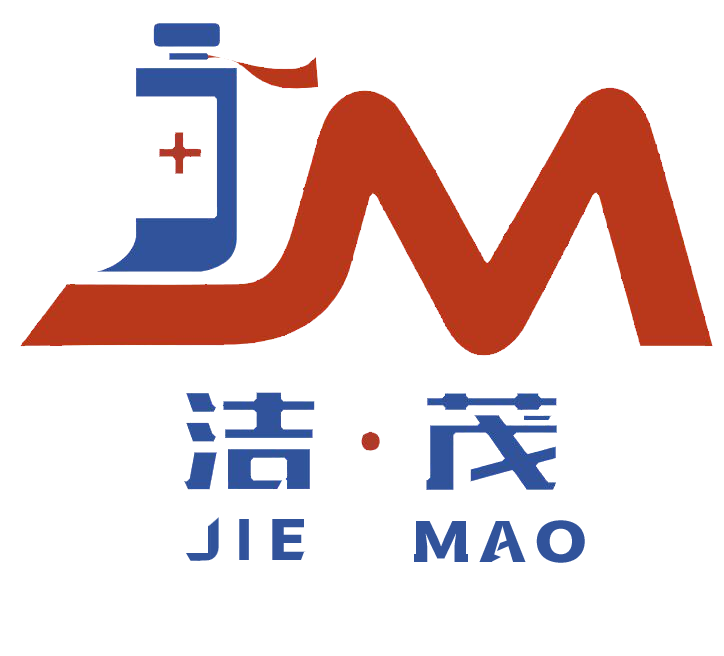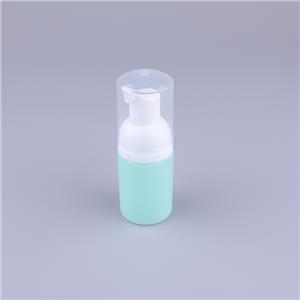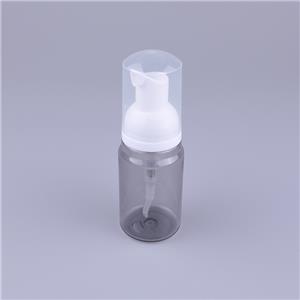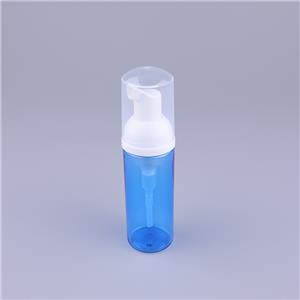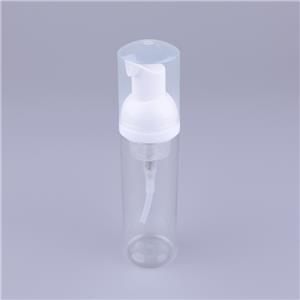- Home
- >
- News
- >
- Public Information
- >
- Application of Heat Stabilizers in Plastic Products
Application of Heat Stabilizers in Plastic Products
Heat stabilizers are the core additives in plastic processing and application, mainly used to suppress molecular chain breakage, cross-linking, or oxidative degradation caused by factors such as heat, oxygen, and light during high-temperature processing (such as injection molding, extrusion, blow molding) and long-term use of plastics, avoiding problems such as discoloration, brittleness, and decreased mechanical properties of plastics. It is suitable for various plastics such as PVC (polyvinyl chloride), PE (polyethylene), PP (polypropylene), PET (polyethylene terephthalate), etc. It is especially indispensable in PVC - the processing temperature of PVC (160-200 ℃) is close to its thermal decomposition temperature (180 ℃). Without a heat stabilizer, hydrogen chloride (HCl) will be released during processing and rapidly degraded, making it impossible to form qualified products. With the tightening of environmental policies and the upgrading of application scenarios, heat stabilizers have developed from traditional lead salts towards lead-free, low toxicity, and high efficiency, becoming a key link in ensuring the quality and safety of plastic products.
1、 The core mechanism of heat stabilizers: targeted solutions to plastic thermal degradation problems
The thermal degradation mechanisms of different plastics vary, and thermal stabilizers precisely block the degradation chain through three core mechanisms: capturing degradation products, inhibiting free radical reactions, and stabilizing molecular structures. The specific pathway of action varies depending on the type of plastic.
1. Capture degradation products: for halogenated plastics such as PVC
The core problem of PVC thermal degradation is that unstable chlorine atoms (such as allyl chloride) in the molecular chain are easily detached at high temperatures, forming hydrogen chloride (HCl), which further catalyzes the accelerated degradation of PVC, forming a "self catalytic degradation cycle". Heat stabilizers (such as metal soaps and organotin compounds) break this cycle in two ways:
Neutralizing HCl: Metal ions (Ca ² ⁺, Zn ² ⁺) in metal soaps such as calcium stearate and zinc stearate can react with HCl to generate stable metal chlorides (such as CaCl ₂, ZnCl ₂), blocking the catalytic effect of HCl;
Absorption of HCl: Organic bases such as lead trisulfate and lead stearate can directly absorb HCl to form harmless salt compounds, avoiding the attack of HCl on plastic molecular chains.
2. Inhibit free radical reactions: for polyolefin plastics such as PE and PP
The thermal degradation of polyolefin plastics such as PE and PP is mainly based on the "free radical chain reaction" - molecular chain breakage at high temperatures produces free radicals, which react with oxygen to produce peroxides. The peroxides further decompose to produce more free radicals, leading to rapid oxidative degradation of plastics. Heat stabilizers (such as hindered phenols and phosphites) block reactions by "terminating free radicals":
Free radical capture: The hydroxyl groups of hindered phenols (such as 1010 and 1076) can bind with free radicals to form stable phenoxide free radicals, terminating the chain reaction;
Decomposing peroxides: Phosphite esters (such as 168) can decompose peroxides into harmless alcohols or ester compounds, avoiding further degradation caused by peroxides.
3. Stable molecular structure: for engineering plastics such as PET and PC
Engineering plastics such as PET and PC (polycarbonate) contain polar groups such as ester and carbonate groups in their molecular chains, which are prone to hydrolysis, ester exchange, or chain breakage reactions at high temperatures, leading to a decrease in mechanical properties. Heat stabilizers (such as acid scavengers and antioxidant complex systems) work by protecting polar groups:
Inhibition of hydrolysis: Acid scavengers (such as epoxidized soybean oil and hydrotalcite) can absorb trace amounts of water and acidic impurities in plastics, avoiding hydrolysis reactions between water and ester groups;
Stable chain structure: Antioxidants (such as hindered phenols and phosphites) can inhibit the oxidative fracture of ester groups, maintain the integrity of molecular chains, and extend the service life of plastics.
2、 Mainstream heat stabilizer types and compatible plastics: matching characteristics and application scenarios
According to their chemical structure and functional characteristics, heat stabilizers can be divided into five categories: lead salts, metal soaps, organotin compounds, rare earth compounds, and organic auxiliary stabilizers. Each product has significant differences in toxicity, heat resistance, and compatibility, and requires precise selection based on the type of plastic and application scenario (such as food contact and outdoor use).
1. Lead salt heat stabilizer: high heat resistance, suitable for non food PVC products
Lead salts (such as lead trisulfate and lead stearate) are traditional PVC heat stabilizers, which have the advantages of strong heat resistance (thermal stability efficiency of 100-150 minutes), low cost, but high toxicity and easy precipitation. They have been limited to use in food, medicine, children's products and other fields. Currently, they are mainly used in PVC products that do not come into contact with the human body:
Application scenarios: PVC pipes (drainage pipes, conduit pipes), PVC profiles (door and window frames, guardrails), PVC cable sheaths;
Core advantage: It can withstand high temperatures (above 200 ℃) during PVC processing, and has good compatibility with PVC, which can improve the weather resistance of products. It is not easy to become brittle after outdoor use for more than 5 years.
2. Metal soap based heat stabilizers: low toxicity and versatile, suitable for PVC in various fields
Metal soaps (such as calcium stearate, zinc stearate, barium stearate) are formed by the reaction of metal oxides with fatty acids, and their toxicity is lower than that of lead salts. They can be divided into single metal soaps and composite metal soaps (such as calcium zinc composite soaps) according to the type of metal. They are currently one of the most widely used lead-free thermal stabilizers:
Single metal soap: Calcium stearate has good heat resistance but low stability efficiency, and is often compounded with other stabilizers; Zinc stearate has high stability efficiency but is prone to "zinc burning" (excessive amount can cause PVC to turn black), and the addition amount needs to be controlled (usually 0.5% -2%);
Composite metal soap: Calcium zinc composite soap (calcium: zinc=2:1-3:1) can avoid the defects of single metal soap, with a thermal stability efficiency of 80-120 minutes, low toxicity, and no precipitation. It is suitable for PVC hoses (food grade hoses, medical catheters) and PVC films (packaging films, cling films).
3. Organic tin based heat stabilizers: highly efficient and low toxic, used for high-end PVC products
Organotin compounds (such as dibutyltin dilaurate and dibutyltin maleate) are currently one of the most thermally stable types, with low toxicity (some varieties meet food contact standards), good compatibility, and can tightly bind with PVC molecular chains. They are suitable for PVC products that require high transparency and safety:
Application scenarios: PVC transparent products (mineral water bottle labels, transparent hoses), food contact PVC (food packaging films, toys), medical PVC (infusion tubes, blood bags);
Core advantages: The thermal stability efficiency can reach 150-200 minutes, and it can suppress "fish eyes" (unplasticized particles) in PVC processing, improve product transparency, and achieve a light transmittance of over 90%.
4. Rare earth heat stabilizers: environmentally friendly and efficient, suitable for high-end plastics
Rare earth elements (such as organic acid salts of lanthanum and cerium) are new environmentally friendly heat stabilizers, with rare earth elements as the core, possessing multiple functions of thermal stability, plasticization, and lubrication. They have extremely low toxicity (LD50>5000mg/kg), strong weather resistance, and are suitable for various plastics such as PVC, PE, PP, etc
Application scenarios: PVC profiles (high-end doors and windows), PE pipes (water supply pipes), PP injection molded parts (automotive interiors);
Core advantages: The thermal stability efficiency is comparable to that of organotin, and it can improve the impact strength of plastics (PVC impact strength increases by 20% -30%), with excellent weather resistance and no significant aging after outdoor use for more than 8 years.
5. Organic auxiliary stabilizer: synergistically enhances efficiency, suitable for all types of plastics
Organic auxiliary stabilizers (such as hindered phenols, phosphites, epoxides) have weak stabilization effects when used alone and need to be compounded with the main stabilizer to improve thermal stability efficiency through "synergistic effects". They are suitable for almost all plastics such as PE, PP, PET, PC, etc
Hindered phenols (such as 1010): When compounded with phosphites, they can inhibit the oxidative degradation of polyolefins and are used for PE films and PP injection molded parts;
Epoxy compounds (such as epoxidized soybean oil): When compounded with calcium zinc soap, they can enhance the thermal stability of PVC and also have plasticizing properties, making them suitable for PVC hoses and food packaging;
Phosphorous esters (such as 168): When compounded with hindered phenols, they can decompose peroxides and are used in PET engineering plastics and PC electronic component casings.
3、 Application Practice of Heat Stabilizers in Key Plastic Products: Scenario based Formula Design
The processing technology and usage environment of different plastic products vary greatly. The selection of heat stabilizers needs to be formulated based on the formula of "plastic type processing temperature application scenario". The following are typical application cases of the four core plastic categories.
1. PVC products: the "core application areas" of heat stabilizers
PVC is the plastic with the highest dependence on heat stabilizers, and almost all PVC products require the addition of heat stabilizers, usually in an amount of 1% -5%. The specific formula varies depending on the type of product:
PVC drainage pipe (non food contact):
Formula: Tribasic lead sulfate (2%)+calcium stearate (1%)+barium stearate (0.5%);
Advantages: Strong heat resistance (no degradation at processing temperature of 200 ℃), good weather resistance, outdoor buried use for more than 50 years;
PVC food packaging film (food contact):
Formula: Calcium zinc composite soap (2%)+epoxidized soybean oil (1%)+hypophosphite (0.5%);
Advantages: Low toxicity and no precipitation (migration amount<0.01mg/kg), high transparency, suitable for food refrigeration and room temperature storage;
Medical PVC infusion tube (for medical contact):
Formula: dibutyltin maleate (1.5%)+hindered phenol (0.3%);
Advantages: High thermal stability efficiency (no HCl release at processing temperature of 180 ℃), good biocompatibility (cytotoxicity ≤ level 1), in compliance with pharmaceutical standards.
2. Polyolefin products (PE, PP): mainly using antioxidant heat stabilizers
The processing temperature of PE and PP is relatively low (PE: 150-180 ℃, PP: 160-200 ℃), and the heat stabilizer is mainly "antioxidant", focusing on inhibiting oxidative degradation. The addition amount is usually 0.1% -1%:
PE water supply pipe:
Formula: hindered phenol 1010 (0.2%)+hypophosphite 168 (0.1%)+rare earth stabilizer (0.5%);
Advantages: Good temperature resistance (able to transport hot water at 70 ℃), resistance to oxidation and degradation, with a service life of up to 50 years;
PP automotive interior parts (such as instrument dials):
Formula: hindered phenol 1076 (0.3%)+hypophosphite 168 (0.2%)+ultraviolet absorber (0.1%);
Advantages: High temperature resistance (no brittleness at 60 ℃ inside the car), UV aging resistance, and no discoloration after long-term use.
3. Engineering plastic products (PET, PC): Balancing thermal stability and performance protection
The processing temperature of engineering plastics such as PET and PC is high (PET: 260-280 ℃, PC: 280-320 ℃), and the heat stabilizer needs to balance "high temperature resistance" and "not affecting mechanical properties". The addition amount is usually 0.2% -2%:
PET beverage bottle:
Formula: Phosphite 168 (0.3%)+hindered phenol 1010 (0.2%)+acid scavenger (0.1%);
Advantages: Inhibit hydrolysis and oxidation during high-temperature processing of PET, maintain transparency (transmittance>90%), and extend the shelf life of beverages;
PC electronic component casing:
Formula: hindered phenol 1076 (0.5%)+hypophosphite 168 (0.3%)+antioxidant (0.2%);
Advantages: High temperature resistance (processing temperature of 300 ℃ without degradation), strong impact resistance (impact strength retention rate>90%), suitable for high-temperature use environments of electronic components.
4. Special plastic products (fluoroplastics, polyimides): high temperature resistant stabilizers
The processing temperature of special plastics is extremely high (fluoroplastics: 300-400 ℃, polyimides: 350-400 ℃), requiring the use of high-temperature stabilizers (such as aromatic heterocyclic compounds, metallocenes), with a typical addition amount of 0.5% -3%:
Fluoroplastic cable (high-temperature resistant wire):
Formula: Aromatic heterocyclic stabilizer (2%)+antioxidant (1%);
Advantages: Resistant to high temperature processing at 400 ℃, with a long-term use temperature of up to 260 ℃, suitable for aerospace and military industries;
Polyimide film (high-temperature insulation film):
Formula: Metallocene compound (1.5%)+hindered phenol (0.5%);
Advantages: Inhibit thermal oxidation degradation at high temperatures, maintain insulation performance (breakdown voltage retention rate>95%), used in high-end electronic devices.
4、 The development trend of heat stabilizers: environmental protection, high efficiency, and multifunctionality
With the tightening of global environmental policies (such as EU REACH and China's "plastic restriction order") and the upgrading of application scenarios, heat stabilizers are transforming from "traditional toxic" to "environmentally friendly and efficient", and will present three core trends in the future.
1. Lead free has become mainstream: replacing lead salt products
Lead salt heat stabilizers have been restricted from use in food, medicine, and children's products in regions such as the European Union and China due to their high toxicity. They will gradually exit the market in the future, and calcium zinc composite soaps, rare earth compounds, and organotin compounds will become mainstream
Calcium zinc composite soap: cost only 60% of organotin, suitable for mid to low end PVC products, expected to have a market share of over 50% by 2030;
Rare earth elements: Suitable for high-end plastics, as rare earth prices decrease, they will gradually replace organotin and be used in high-end PVC and PE products.
2. Multi functional integration: reduce the variety of additives
Traditional heat stabilizers have a single function and need to be compounded with various additives such as plasticizers, lubricants, antioxidants, etc. In the future, they will develop towards the direction of "thermal stability+plasticization+lubrication+antioxidant" multifunctional integration:
Rare earth heat stabilizers have achieved dual functions of "thermal stability+plasticization", which can reduce the amount of plasticizer added by 10% -20%;
Epoxy based auxiliary stabilizers have both thermal stability and plasticizing functions, and are used for PVC food packaging to reduce the total amount of additives used.
3. Biobased heat stabilizers: in line with green development
Biobased heat stabilizers are made from plant extracts such as tea polyphenols and rosemary extract, which have extremely low toxicity and are biodegradable, in line with the "dual carbon" policy. Currently, they have been piloted in PE and PP food packaging
Tea polyphenol heat stabilizer: When compounded with hindered phenols, it can inhibit the oxidative degradation of PE film and is biodegradable, with no environmental pollution after disposal;
Rosemary extract: used in PP food containers, with a thermal stability efficiency of up to 80 minutes, meeting food contact safety standards, and is expected to replace traditional organic antioxidants in the future.
5、 Summary: Heat stabilizers - the "invisible guardians" of plastic product quality
From the long-term durability of PVC pipes, to the anti-aging of PE films, to the safety and transparency of PET beverage bottles, heat stabilizers ensure the quality of plastic products in the whole life cycle from processing to use by precisely blocking the thermal degradation reaction. Currently, with the upgrading of environmental and safety requirements, heat stabilizers are undergoing a transformation from "lead salt substitution → lead-free → environmentally multifunctional". In the future, they will not only be "performance guarantee additives", but also become a key force in promoting the green and high-end development of the plastic industry, adapting to more high demand fields such as new energy, medicine, and high-end manufacturing.
